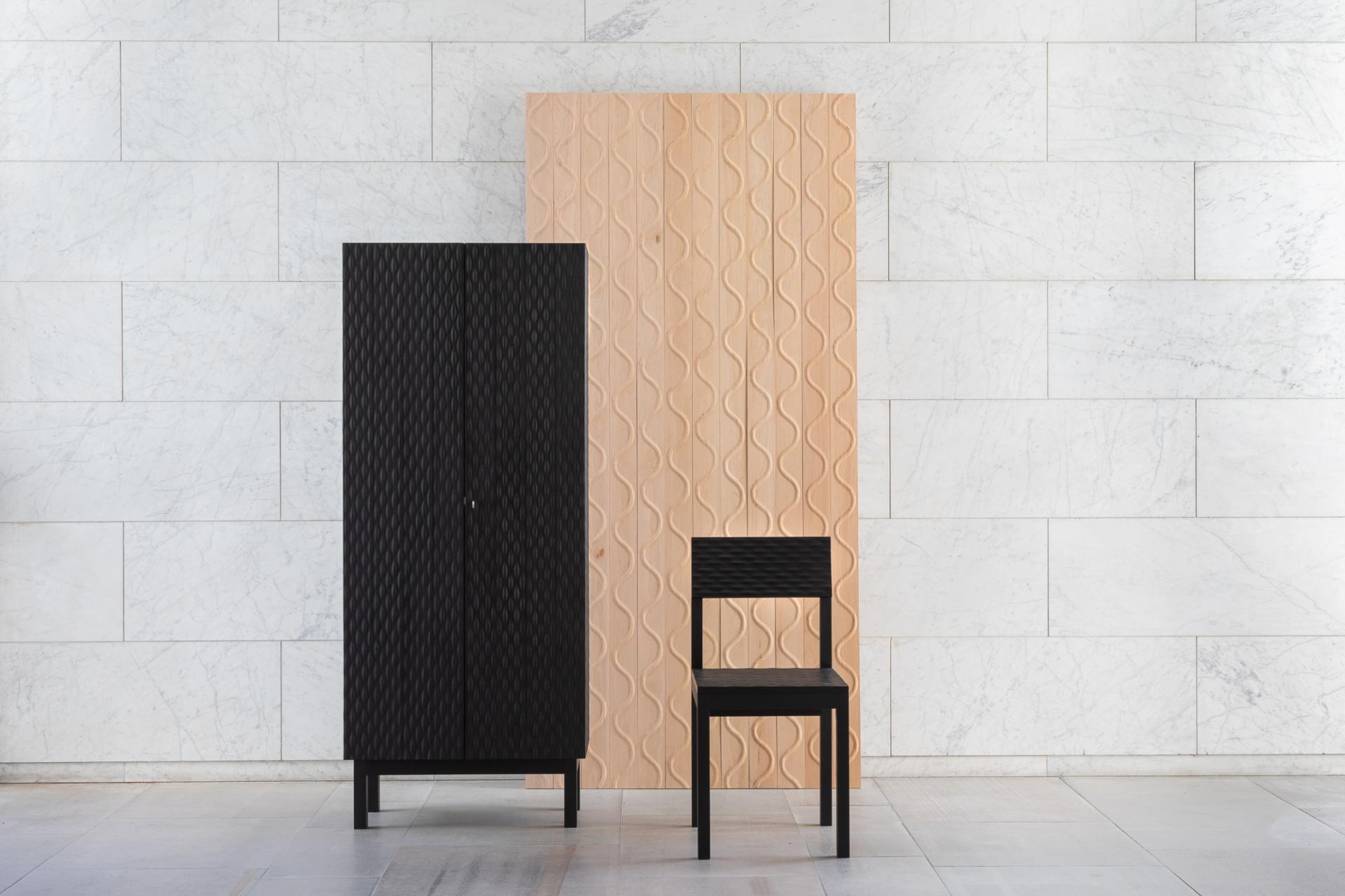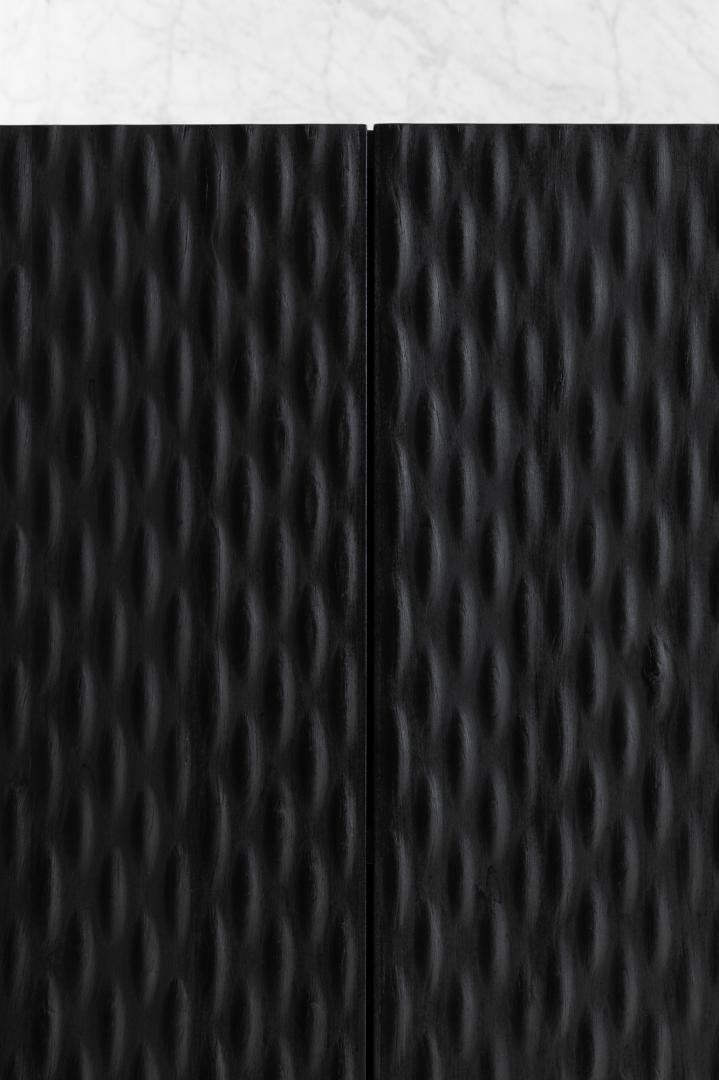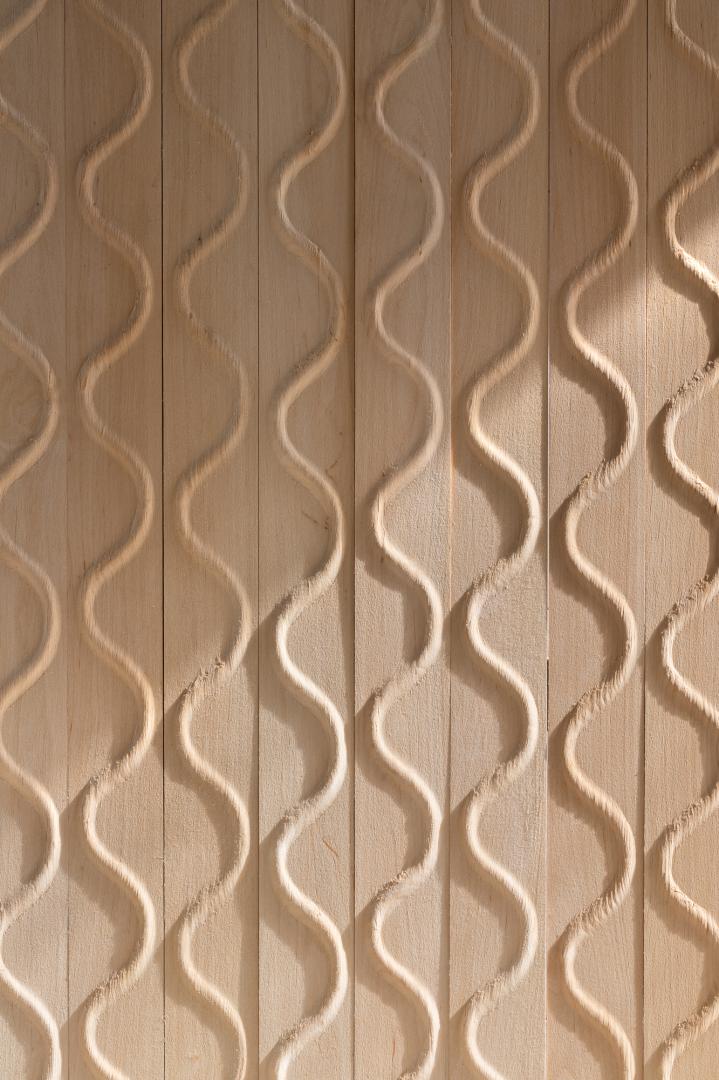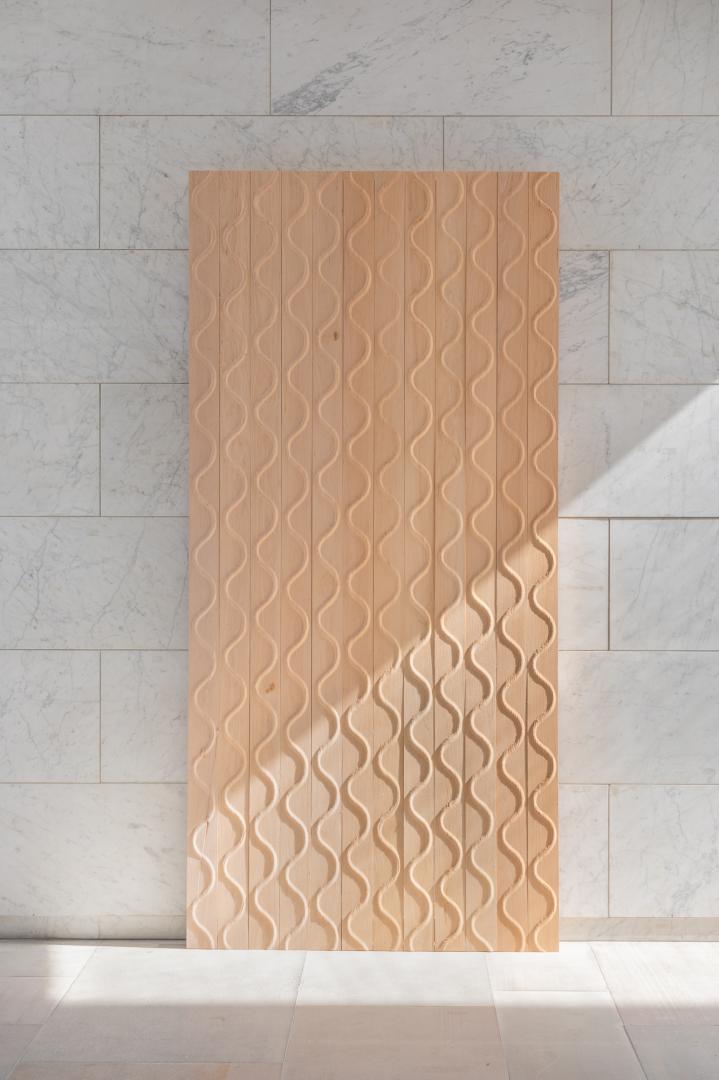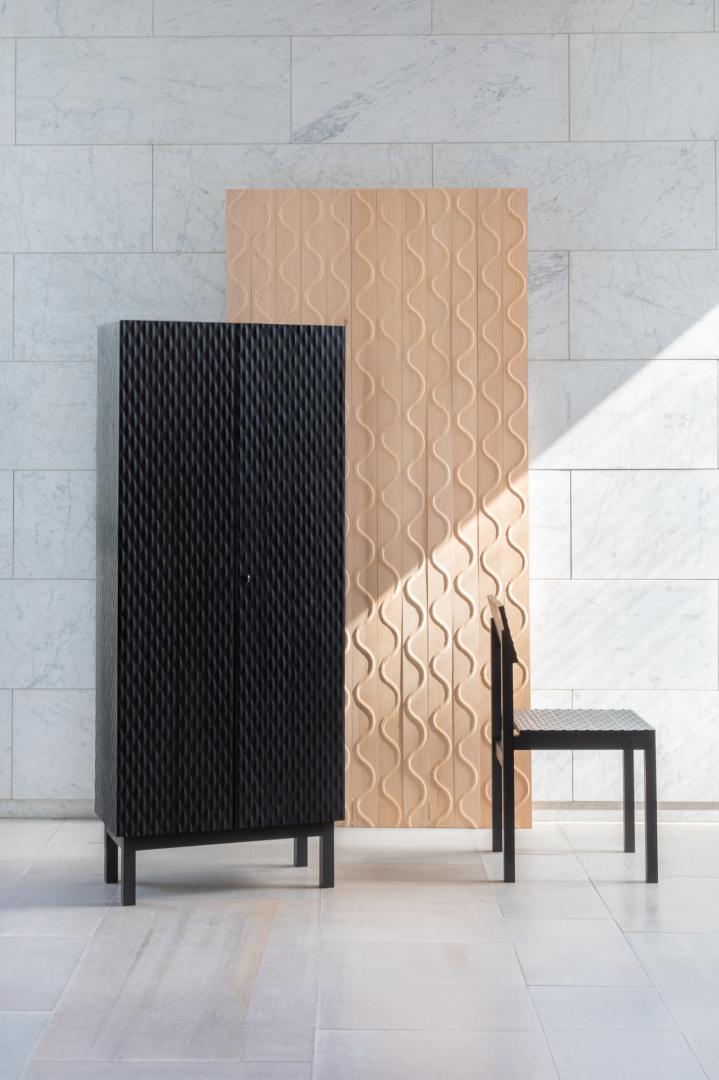Embossed Wood
Basic information
Project Title
Full project title
Category
Project Description
Embossed wood - is a research project aimed at exploring the potential of a certain embossing method for solid wood. The technique offers an easy and cost-efficient way of producing textured solid wood surfaces with various functions. Textured wooden surfaces can have many applications varying from visual expression to more technical qualities such as friction or weather proofing. Adding such features to wood makes this popular and sustainable construction material even more versatile and allows
Project Region
EU Programme or fund
Description of the project
Summary
Embossed wood - is a research project aimed at exploring the potential of a certain embossing method for solid wood. The technique offers an easy and cost-efficient way of producing textured solid wood surfaces with various functions. Textured wooden surfaces can have many applications varying from visual expression to more technical qualities such as friction or weather proofing. Adding such features to wood makes this popular and sustainable construction material even more versatile and allows it to be used in applications that it was not suited for before.
The embossing method is based on an old carpenters trick used to repair indents in wooden surfaces by swelling them back up using moisture and heat. By a few alterations in the process, the phenomena can be used for creating embossments instead of flattening out indents. The patented method consists of the following steps: 1. an indent is pressed in a wooden surface with a tool. 2. the surface is planed down to the bottom of the indent, 3. the surface is treated with moisture and heat which makes the indented fibers retain their original shape creating an embossment. The method is brutally simple, it does not include any harmful chemicals or toxins, and the technical requirements are relatively low.
Key objectives for sustainability
Wood as a raw material is at the core of this concept. As we all know wood is a versatile material with a lot of good qualities and applications. On top of all the aesthetic and technical properties of wood, it is also renewable and binds carbon dioxide from the atmosphere making it a sustainable construction material. Despite of all the wonderful properties of the material there are also a lot of applications that demand properties that wood does not possess, which forces us to use other less sustainable materials. However, by manipulating wood and adding features and functions to it through wood processing, wood can be made more versatile and suitable for applications that it was not suited for before. The added functions will make wood even more attractive and more useable as a construction material by offering a new range of sustainable construction options. The added functions could be for instance increased friction due to the embossed surface texture, or improved weatherproofing of the material due to its texture.
Another sustainable aspect of the method is its visual qualities, its decorativeness. Surface treatments, paints, oils, lacquers, etc. are known to be problematic and unsustainable in many cases. The current trend is to redesign the surface treatments to be environmentally friendly and to get rid of all the plastics and hazardous chemicals in them. Surface treatments basically have two functions, they cover the underlying material from moisture, dirt, corrosion etc., and they improve the appearance of the material with an added color that pleases the eye. What if instead of painting a wooden house with a pleasing color you would cover it with a pleasing surface texture? If the surface texturing could offer both weatherproofing and visual appeal maybe all houses would not need to be painted anymore.
Key objectives for aesthetics and quality
One of the main characteristics of wood as a material is the experience it offers. Wood is a material that most of us experience as warm, safe and natural. It is almost as it was built in to us. We choose to use wood in places that we want to feel comfortable in. Surfaces and objects that we are in direct contact with, such as floors and furniture, are often wood because of its exceptional tactile qualities.
The embossing method offers new ways to use and experience wood. The technique allows an easy and cost-efficient way to make embossed patterns and textures on wooden surfaces that would be too complicated or expensive otherwise. A textured wooden surface has many qualities of which visual aesthetics and tactility are maybe the most evident. Embossed wooden surfaces can be experienced both visually and through the sense of touch depending on the application. Embossed surfaces can be used in furniture or interior elements such as walls and floorings offering intriguing sensations that stimulate both the touch and the eye. Embossed wood could also be used on exterior surfaces in the built environment offering new options and solutions for wooden architecture. The visual qualities of an embossed surface are highly dependent on the play between shadow and light. The angle, hardness and intensity of the light change the way the embossed surface is perceived. Out there in the sunshine all these parameters are in constant movement which make embossed wooden surfaces immensely intriguing to observe in natural light.
Key objectives for inclusion
Tactility is a concept that is in constant decrease in our digital society. People get more and more isolated from each other and from the nature. Few things we touch in our daily lives are natural or give us some sort of a tactile sensation. Ironically, tactile qualities do not convey through a touch screen interface.
The embossing method offers an easy and cost-efficient way to create wooden surfaces with tactile qualities that stimulate both the mind and the body. The simplicity and the low technical requirements of the method make it reasonably priced and available for the whole society. The method lowers the cost of creating intricate textured wooden surfaces and changes it from a luxury product to something that is accessible for everybody.
Innovative character
A textured wooden surface is nothing new in itself but this way of making them is. Similar textured surfaces can be made for instance by carving them by hand or alternatively routing them with a CNC-router. The advantage of this embossing method, compared to the aforementioned conventional alternatives, lies in its efficiency and relatively low technical requirements which offer a cost-efficient way to cover large wooden surfaces with embossments. The embossing method opens up new possibilities for solid wood processing and allows wood to be used in ways that would be too expensive or challenging by traditional means.

